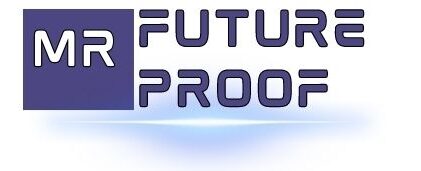Virtual reality (vr) in education engages students in a new dimension of learning. The use of vr facilitates an immersive and interactive education experience for students, increasing engagement and knowledge retention.
Virtual reality is quickly becoming a popular tool in enhancing the learning experience for students. The use of vr technology allows students to engage in a more interactive and immersive way of learning, thereby increasing their interest and understanding of the subject matter.
This article explores the power of virtual reality in education, highlighting the benefits it brings to both students and educators. The immersive nature of virtual reality ensures that students are fully engaged in the learning process, leading to better retention of knowledge. Furthermore, the article also considers potential drawbacks of vr education and proposes solutions to overcome these challenges.

Credit: www.unrealengine.com
How Virtual Reality Enhances Learning Experience
The power of virtual reality: engaging students in a new dimension of learning
Virtual reality (vr) technology has revolutionized the way we approach education. By creating an immersive learning experience, it allows students to interact with the subject matter in ways never before possible. In this blog post, we will explore how vr can enhance the learning experience through interactive learning, experiential learning, and catering to all learning styles.
Interactive Learning: How Immersive 3D Environments Make Learning More Engaging
Vr provides students with a unique opportunity to explore the subject matter in an interactive and immersive 3d environment. This kind of virtual exploration encourages students to interact with the material in a way that textbook-based learning cannot. Here are some ways in which vr facilitates interactive learning:
- Engaging with learning materials: Vr allows students to engage with learning materials, such as graphs, maps, and charts, in a way that is more interactive and engaging.
- Collaboration and communication: Vr enables students to collaborate and communicate effectively in real-time with their peers and teachers, which enhances their learning experience.
- Virtual laboratories: Vr technology provides a safe and cost-effective alternative to traditional laboratory experiments, allowing students to learn from a distance.
Experiential Learning: How Virtual Reality Facilitates Experiential Learning For Abstract Concepts
Vr technology facilitates experiential learning by enabling students to engage in various experiential and immersive simulations. It helps in creating practical learning experiences that simulate real-world scenarios, making it easier to grasp abstract concepts. Here are some examples of how vr facilitates experiential learning:
- Simulation-based learning: Vr provides a virtual reality simulation that lets students immerse themselves in different environments to gain hands-on experience.
- Virtual field trips: Vr technology offers virtual field trips to students who may not be able to access real-world locations, and it helps them to engage with and understand different environments realistically.
- Historical and cultural experience: Vr allows students to explore historical and cultural sites, enhancing their learning experience by making it more immersive and interactive.
Incorporating All Learning Styles: How Vr Can Help Visual, Aural, And Kinesthetic Learners
Vr can cater to different learning styles by creating a unique learning environment for the students. It helps in engaging with all types of learners- visual, aural, and kinesthetic. Here are some ways in which vr caters to students with various learning styles:
- Visual learners: Vr technology presents visual content in a 3d environment that is more engaging and easier to understand.
- Aural learners: Vr facilitates aural learning by enabling the sharing of audio-based content.
- Kinesthetic learners: Vr technology provides a virtual learning environment that allows students to interact with the subject matter physically.
Vr technology enhances the learning experience by facilitating interactive learning, experiential learning, and catering to all learning styles. It enables students to learn by doing, engaging, and interacting with the subject matter in a way that creates a more profound impact, resulting in better comprehension and retention.
The Advantages Of Implementing Virtual Reality In Education
The power of virtual reality: engaging students in a new dimension of learning
In modern times, education is evolving quickly, and with it, learning technologies too. With immersive digital experiences, virtual reality (vr) has taken the lead role in the technology-driven space and is helping revamp the education industry. Vr offers a remarkable way to make learning more interactive, engaging, and effective.
Here, we will discuss the advantages of implementing virtual reality in education.
Increased Motivation: How Vr Positively Affects Students’ Motivation, Involvement, And Retention Rate
Virtual reality is a great way to motivate and engage students by providing them with a challenging and interactive learning environment. Here is how it positively affects students’ motivation, involvement, and retention rate:
- Vr provides students with an opportunity to experience learning as an activity, not a chore. It makes learning fun and exciting by transforming textbooks into interactive and immersive experiences.
- Vr stimulates a student’s natural curiosity and passion for learning by excelling in visual, auditory and kinesthetic learning. They can explore, experiment, and innovate in the comfort of their own privacy.
- As per studies, vr-based learning significantly increases students’ retention rate compared to conventional classroom-based methods. This helps them retain knowledge and apply it in real-life scenarios.
Cost And Time Savings: How Implementing Vr Reduces Both Overhead Costs And Time For Both Students And Educators
Vr is an innovative solution that saves time and money for educational institutions, teachers, and students. Here’s how it reduces overhead costs and time:
- Vr classroom-based learning helps reduce expenses related to textbooks, learning materials, travel, and field trips. Instead, students can dive into a virtual world with their vr headset to experience lifelike situations.
- Educational vr technology needs significant investment; however, the savings it provides in the long run are significant. With vr, students don’t need to be physically present in the classroom, thereby reducing infrastructural costs.
- Vr provides an efficient time-saving solution when learning new practical or theoretical applications, especially for working professionals.
Increased Creativity: How The Technology Inspires New Creative And Innovative Ways Of Learning
Vr technology is beyond an immersive experience; it creates a new dimension of creative thinking and innovative ways of learning. Here’s how:
- Vr breaks the traditional model of one-size-fits-all learning and provides an opportunity for personalized learning. Students can tailor their learning experiences in real-time and benefit from a customized learning path.
- Vr extends beyond just theoretical knowledge and helps students to experience practical, real-life scenarios with ease. It brings innovation to sectors that traditionally have been suffering from monotony and unproductivity.
- Vr technology helps students develop new competencies that are essential in the 21st-century labor market, such as critical thinking, problem-solving, and creativity.
Incorporating virtual reality as a teaching strategy has immense potential to change the way students perceive and experience learning. Today’s students are more tech-savvy than ever, and vr technology enables educators to create an interactive learning environment that’s adapted to student needs, interests, and abilities.
With vr, learning becomes an enjoyable and exciting journey, empowering students to thrive in their lives’ path.
Overcoming Potential Challenges
Technological Limitations
Implementing vr technology in the classroom comes with its own set of challenges. Some of these challenges include:
- Cost of equipment: Virtual reality devices tend to be expensive, which may limit the feasibility of employing vr in various educational settings.
- Technical considerations: The complexity involved in set-up and maintenance can be overwhelming for educators, especially those without an it background.
Despite these challenges, schools that have taken the leap have found creative ways to overcome them, such as applying for grants or collaborating with local businesses to obtain funding and expertise.
Concerns With Misuse
As with any technological innovation, concerns around misuse have been raised. In a classroom setting, this can manifest in students’ safety and well-being. However, these risks can be mitigated through:
- Proper guidelines: Creating guidelines for vr use, both in group settings and individual exploration, can ensure that students remain safe from potential hazards.
- Monitoring: Supervising students during vr activities can help prevent any misuse that may occur.
By establishing clear rules and taking necessary precautions, schools can ensure students’ safety while still reaping the benefits of vr technology.
Ensuring Inclusivity
Accessibility and inclusivity are critical considerations when it comes to integrating vr into education. To ensure equal access for all students, schools can:
- Provide vr equipment for all students: By making vr equipment available to all students, regardless of socioeconomic background, educational institutions can ensure that everyone has a chance to benefit from this technology.
- Creating inclusive content: When developing vr educational materials, it is important to ensure that the content is inclusive and caters to all students, regardless of any physical disabilities they may have.
In addition to making content inclusive, educators can also train themselves on how to teach in an inclusive manner and how to adapt content to suit different learners’ abilities. With these measures in place, vr can be a powerful tool to enhance learning for all students.
Frequently Asked Questions Of The Power Of Virtual Reality: Engaging Students In A New Dimension Of Learning
What Is Virtual Reality In Education?
Virtual reality in education is the use of immersive digital environments to enhance teaching and learning experiences.
How Does Virtual Reality Engage Students?
Virtual reality engages students by providing an immersive, interactive, and memorable learning experience that captures their attention and stimulates their curiosity.
What Are The Benefits Of Using Virtual Reality In Education?
The benefits of using virtual reality in education include improved engagement, retention, and knowledge acquisition, as well as opportunities for experiential learning and increased accessibility.
Conclusion
Virtual reality has emerged as a promising tool to transform the way students learn. By simulating real-life scenarios, vr provides students with hands-on experiences that promote better understanding and enhance memory retention. Educators who embrace this technology can create an engaging and interactive learning environment that invigorates learners and makes education more accessible and inclusive.
With the phenomenal advancements in vr technology, we can expect to see its integration in various fields of education in the coming years. As more educators realize its potential and more students experience its benefits, vr will become a standard learning tool that transforms traditional classrooms into more immersive and dynamic spaces.
Vr truly opens up a new dimension of learning that will enable students to comprehend complex concepts with ease and become proficient in a wide range of skills. Let us embrace the power of vr and unlock the unlimited potential it holds for revolutionizing education.

